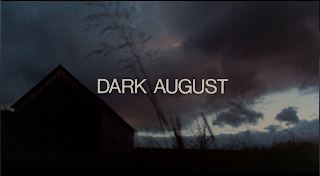Dark August (1976)

I wasn’t around at the time but by all accounts, 1976 was a pretty weird year to live through, culturally. The highest-selling album was ‘Frampton Comes Alive.’ The second highest-grossing movie was the Barbara Streisand / Kris Kristofferson ‘A Star is Born.’ The book Trinity by Leon Uris, which was about Irish history leading up to The Troubles and I’m sure has aged gracefully, topped the bestseller list. Ford vs. Carter. The death of Mao Zedong. There was an Olympics in there. There was plenty going on but none of it seems to have exactly lingered in the public consciousness. The world did get five new episodes of ‘Columbo,’ though. It was also far enough past the sixties that the hangover had well and truly settled in. Whatever fuzzy energy had built up t...